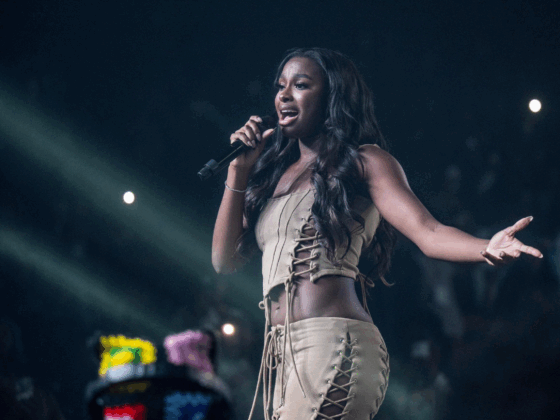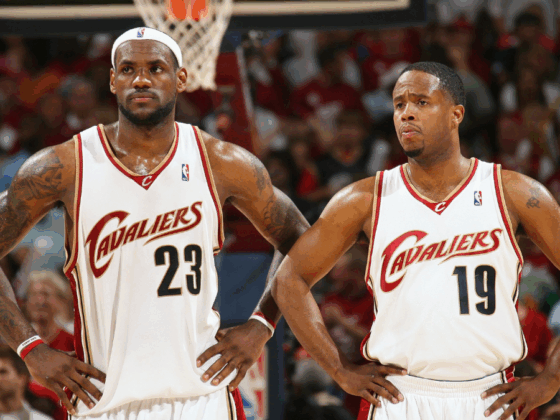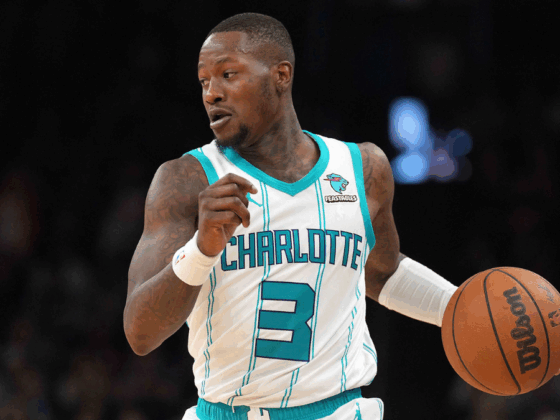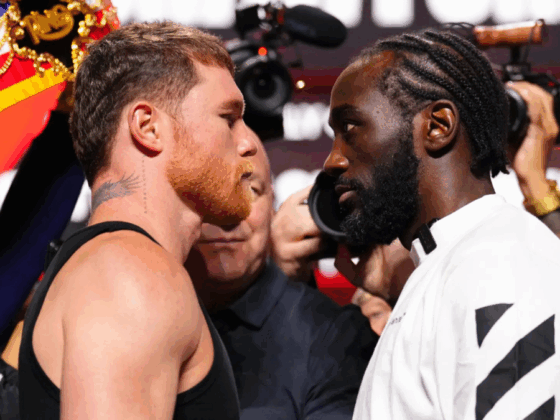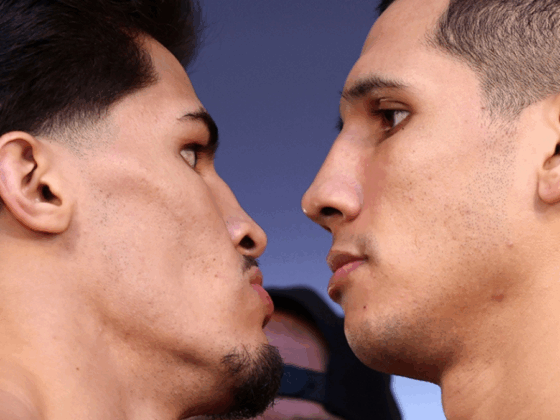
As we approach the 2018 NBA Finals on Thursday, we recognize that for the fourth consecutive year, the same two franchises face off. LeBron James and Stephen Curry yet again. Draymond Green, Kevin Love (who was on the 2015 Cleveland Cavaliers roster, though injured), Klay Thompson and others have also been constants during the ongoing four year reign of these two powerhouses (even if the tiers of strength for these two teams isn’t equivalent). Of course, Kevin Durant is now also in the mix, giving Golden State even more ammunition to score reliably when a possession may seem bleak.
Each team was the beneficiary of some unprecedented three-point luck in its last game but made it to compete for the Larry O’Brien again, nonetheless. This isn’t to say that neither team should have won Game 7 of its respective conference; it’s also not to say that something mysterious or unjust willed Cleveland and Golden State to their conference crowns, nullifying the inherent value of these teams’ achievements. However, Boston and Houston had untimely off-nights that weren’t conducive to winning against almost any NBA team.
In the Eastern Conference Finals Game 7 on Sunday, LeBron and the Cavaliers began the game with a horrendous 3/21 3P%, which generally indicates doom, but they were resilient and shaved the deficit, thanks to renewed defensive focus and some fortuitous interactions between the ball and the rim which left Boston with a seemingly impractical mark of 7/39 from downtown. Players who had been reasonably consistent from downtown, like Terry Rozier and Jaylen Brown, went 0/10 and 3/12 respectively, which isn’t statistically impossible… but for example, in Rozier’s case (as a quick, rough estimate), the probability that he’d miss 10 consecutive three pointers in a game given his normal 2017-18 rate of conversion would be about .0826 percent.
During Game 7 of the Western Conference Finals, Houston had an 11 point lead at the half, which is admittedly tenuous against Golden State, but went through a ghastly dry spell from beyond the arc, missing an NBA postseason record 27 straight three point attempts. It was as if someone went to the settings in NBA2k and turned three-point success down to its minimum. James Harden actually hit a three during that stretch which was dubiously waved off; they acquired every bad bounce there was, it seemed. In another rough estimate, the probability of a team like the Rockets missing twenty-seven straight free throws was roughly equivalent to this:
The likelihood of the Rockets, a 36.2% three-point shooting team, missing 26 threes in a row is .00084% or a 1 in 118757 chance.
— Eric Sidewater…. Jr (@SixersScience) May 29, 2018
Overall, the Rockets faltered with 7-44 three-point shooting, which can be accredited to Golden State in part.
Aberrant shooting percentages and blatant scoring woes by opponents aren’t exclusive to this set of championship runs, however. It would be unfair to highlight only this good luck & disregard the good fortune that other championship-level teams have had in the past because of recency bias.
Nevertheless, we’re back to part four: 2018 NBA Finals
The journeys were different. This season, Cleveland constantly had to seek new advantageous lineup combinations amid the influx and efflux of players. Trading away disgruntled Kyrie Irving in return for Isaiah Thomas and the Brooklyn pick (which became the 8th pick of the 2018 NBA Draft) set the tone for the season. Immigration and emigration. Later at the deadline, the Cavaliers flipped horridly performing Thomas to Los Angeles & acquired a bevy of new guys: Larry Nance Jr., Jordan Clarkson; they later brought in Rodney Hood and George Hill.
Golden State kept largely the same core, but shuffled around some of its second unit players; they even ended up with a surfeit of centers, unfortunately as some of them haven’t been of much use in the postseason. Kerr is quite comfortable digging deep into the roster to find minutes for his beloved rotation players.

But, each year in the NBA is its own separate entity. It’d be unreasonable to posit that we can predict this NBA Finals with information from the past matchups, exclusively. Perceived animosity, bred from familiarity with the opponent, won’t make this an equitable series alone. What can we gather for these teams’ bodies of work?
2018 NBA Finals: Brief Observations
Golden State Warriors: Strengths Applicable in this series
- First and foremost, Stephen Curry (GSW’s leader in PIPM wins and RPM Wins, despite only playing 51 games; career-high regular season .675 TS% on the season, .603 TS% during this playoff run) will likely be even more prolific in the Warriors’ offense this series. Here’s a quick allusion to the offensive impact he brings even in transition. As I mentioned here, the Cavaliers played a mini-game of expected value here, valuing the probability of Steph hitting a wide open corner three at a probability greater than 66.7 percent, they simply let Kevin Durant dunk the ball.
- Additionally, the Warriors can stretch the floor from even farther beyond the three-point line than most teams (Houston and Golden State are very unique in this regard). Kevin Durant, Stephen Curry and Klay Thompson are all known for their deadeye shooting quality, seemingly unfazed by a closeout and more than willing to take deep threes that can kill the opponent’s morale. Whereas Boston would take many threes right around the arc, Golden State may force the Cavaliers to extend their defense even farther which could incite some free runs to the hoop by preoccupying perimeter defenders.
- Golden State has enough depth that they can play quite comfortably to sustain pace and buy extra time for their heavy-hitting players. Todd Whitehead from Nylon Calculus (@CrumpledJumper) brought forth sound evidence of this through Herfindahl-Hirschmann Index, measuring the lineup densities by minutes played shares. The Warriors don’t have much lineup density relative to other teams & will likely be comfortable testing several bench players’ functionalities, even against LeBron-led lineup combinations. As we know, Quinn Cook, even, was given the opportunity to take an exceedingly important shot in the late stages of Game 5 of the Western Conference Finals. Kerr will not be too diffident to explore, even in the 2018 NBA Finals. Playing at a frenetic pace may even help tire LeBron James out if the Cavaliers end up submitting to the pace of play that the Warriors propose.
- As Cleveland isn’t as successful with its switch-ability as Houston is, the gravity that Curry brings through off-screen play types and their split cut actions will likely be of even greater value. He is the centerpiece to that offense, providing the most salient global impact (or, player most conducive to high offensive ratings on the team). His box creation and his gravity through off-ball movement are more damaging to an opposing defense than isolations from the midpost– quite clear through the Houston/Golden State series, in which Steve Kerr’s shot distribution often truckled to Mike D’Antoni, whose plan was to generally avoid trapping & potentially surrendering 4-on-3 power plays in the frontcourt while instead coaxing players like Kevin Durant into isolating, taking looks of lower expected value and potentially turning the ball over (based on the knowledge that Durant’s offensive strength isn’t passing out of double teams).

- Another strength of the Warriors seems to be the third quarter… Check out the 3rd quarter net ratings for the Warriors this past series against the Rockets:
- Game 1: +32
- Game 2: -.4
- Game 3: +40
- Game 4: +80.9
- Game 5: -4
- Game 6: +75.9
- Game 7: +88.5.
- Certainly, we can also point to Golden State’s switching prowess. The luxury of having several candidates to guard great isolation scorers, like James Harden or, in this case, LeBron James, will go a long way to stagnating the Cavaliers’ offensive attack. It’s likely Cleveland will try to decrease the pace of play and seek out mismatches through low-speed pick-and-rolls and pick-and-fades, but the Warriors have reasonable ability to thwart these possessions– and decreasing the overall value of this play type. It’s tough to switch well, especially without having it be integral of your defensive philosophy. The Warriors, of course, are among the teams most comfortable with switching PnRs.
- Another strength of the Warriors seems to be the third quarter… Check out the 3rd quarter net ratings for the Warriors this past series against the Rockets:
In this diagram, the smaller the value the more indicative it is of a team that defends with emphasis on versatility. Check the concept and formula with Analyticskilledit.
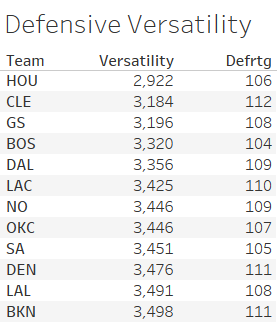
Cleveland was schematically versatile, too, but the defensive rating they touted as of April 10th left a lot to be desired. (It’s improved a bit since, but not such that they should feel particularly confident employing it against one of the best teams in the history of the Earth.)
Where they’re potentially weak?
- If the Cavs can euchre the Warriors out of sound shot selection, then that may help them win one game– perhaps if the Warriors dabble in midrange post-up possessions and don’t pursue very many shots from distance.
- Another potential shortcoming: Will the Cavaliers guard Draymond Green? Houston simply didn’t. Perhaps, Draymond’s three-point luck resurfaces and kills the value of that defensive strategy, but if he remains inefficient, that could become a bit of a weakness for Golden State in this series. Here’s information on his shooting success during this postseason: 26/95 on jumpers, 18/65 from 3-point land, 6/19 on midrange twos (where midrange equals ten feet to the three-point line)– via Basketball Reference
It’s probable that Golden State force more dribble handoffs with Steph, Klay and Kevin to prevent Draymond from being left out on an island. - It is also true that Draymond Green is the best help defender by a significant margin. Perhaps, if LeBron could seek him a bit in isolations, he could create highly valuable looks at the rim & along the 3-point line for others after the defense frenetically collapses onto him. That’s a big if though. Here’s a look at what James Harden was able to do in possessions matched up against Draymond Green (defender):
- Game 4: 5 team points in 9 possessions (pretty terrible)
- Game 5: 12 team points in 11 possessions (1.09 PPP, quite respectable)
- Game 7: 11 team points in 10 possessions (1.10 PPP),/li>
What’s problematic here, though, is that LeBron’s ball-handling isn’t as tight or as calculated as Harden’s. It may not be particularly simple to fool Draymond in an isolation possession without that as a refined skill set.
With the knowledge that Kevin Durant doesn’t provide the same rim protection with the same consistency as defensive juggernaut Green does, it may be worth exploring this matchup to see if high expected value shots for other Cavaliers can arise from this.
Cleveland Cavaliers: Salient Strengths

- LeBron James is the truly remarkable one, touting 13.3 PIPM Wins Added and over 15 RPM Wins this season; Kevin Love’s value is also quite strong when stretching the floor as he’s truly capable, as well. LeBron will be required to make consistent plays against a defense with active hands, as well as finding mismatches to expose in isolation. He’s brought forth high-volume, high-efficiency games with great regularity this postseason.
- If the shooters are locked in, the LeBron and shooters concept is difficult to defend when those shooters will make defenders pay for helping from one pass away. Kyle Korver ought to play often; he can even provide a soupcon of Stephen Curry’s gravity with his prowess off-screens.
- The Cavaliers can switch more than in previous years now that they’ve got stronger players & ones who aren’t not quite as easily exploitable in mismatches as Kyrie Irving was.
- This one is huge: Deron Williams is not playing. He was a defensive turnstile off the bench & also shot 2/16 throughout the 2017 NBA Finals.
Where they’re weak

- Without Kyrie Irving, potentially anomalously great isolation scoring evaporates from their lineups. Finding ways to exploit GSW bigs on the perimeter like Jordan Bell becomes less valuable & a less dependable strategy. Shot creation is somewhat replaceable if not at an elite level, but Irving brought forth isolation scoring at a competitive PPP. Additional shot creation is instead re-allocated to a few objectively weak scorers on the roster.
- There’s an overall decrease in playmaking options. Ancillary playmaking was originally supposed to be fulfilled by Isaiah Thomas, but with his injury and ineffectiveness, Thomas became exceedingly expendable for long stretches. Occasionally, Jordan Clarkson is brought in to provide a bit of life to the second unit as a ball-handler, but he’s generally underwhelming there.
- Defensively, this team is generally bad with even players like LeBron James hovering beneath -1 D-PIPM (defensive player impact plus-minus). There have been a few bright spots defensively, such as Kyle Korver ironically, who is sixth in D-RPM (also above +1 in D-PIPM). With film to substantiate this, Korver seems big enough to impact opponent’s shots and cerebral enough to make deflections that at least delay the opponent from scoring for a bit.
It’s likely that Tyronn Lue won’t continue to be thrown for a loop; Korver’s defensive effort and impact far exceeds that of J.R. Smith.
Holistically speaking though, the defensive personnel from this team is several notches down from the Houston Rockets.
Who’s likely winning & how long would the series take?

Though it’d be quite the event if Cleveland were to win, probabilistically, this would not be a sound bet to make.
The Cavs likely don’t clear twenty percent in any reputable model; they simply don’t have the body of work or upper echelon impact players, in excess. (Even further, how soon will Kevin Love be out of concussion protocol?) This is likely one of the most lopsided championship level encounters in recent memory.
The healthy version of the Rockets would have been likely 80-90% favorites in such a series as well.
Here’s a glimpse at a probabilistic model from Jacob Goldstein (@jacobegoldstein on Twitter), a few weeks ago, detailing that if either Western Conference team won, it’d be favored around 90-to-10.
Updated projected playoff probabilities for the #NBA playoffs based on 10,000 simulations (Current through games on 5/16/2018): pic.twitter.com/Xt4xSylrIk
— Jacob Goldstein (@JacobEGoldstein) May 17, 2018
That’s how much stronger the Western Conference teams were.
A better question would be: what odds are better, Cavs winning the series or the Warriors winning in a sweep? Given the disparity in talent and the discrepancy in the body of work (in terms of the information we have about these teams when they are healthy), this should be quick.
Warriors in four as a fait accompli.
